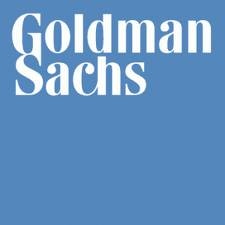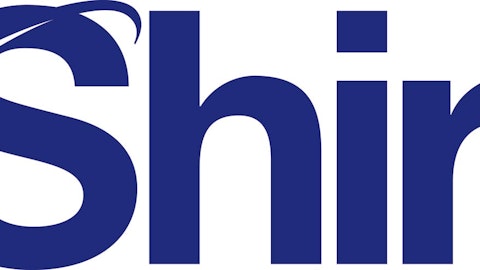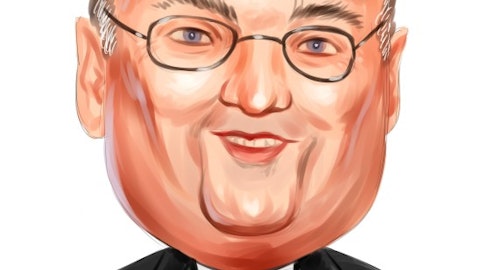After two years of reports from Bloomberg saying that the nations’ five biggest banks — Bank of America Corp (NYSE:BAC), Citigroup Inc (NYSE:C), Goldman Sachs Group, Inc. (NYSE:GS), JPMorgan Chase & Co. (NYSE:JPM), and Wells Fargo & Co (NYSE:WFC) — all receive an implicit taxpayer subsidy of approximately $83 billion because of their too-big-to-fail status, one of those named is disputing that notion.

The report, courtesy of Goldman Sachs Group, Inc. (NYSE:GS) Global Markets Institute, contests the notion that the six biggest U.S. banks — unlike Bloomberg, Goldman Sachs Group, Inc. (NYSE:GS) is including Morgan Stanley (NYSE:MS), as well — still have a funding advantage over smaller banks. Sure, they used to have one, the report states, particularly during the financial crisis. But, that’s all over now.
Basically, Goldman Sachs Group, Inc. (NYSE:GS) admits to a funding advantage of only 6 basis points for the biggest banks for the years 1999 to 2007, a much bigger advantage during the crisis years of 2008 to 2009, culminating in a distinct disadvantage from 2012. To average things out, the study purports that the six biggest banks enjoyed a bonus over smaller banks of 31bps from about 1999 to the end of the financial crisis, which they infer was around 2011. Currently, the report asserts, big banks are working with a 10bps disadvantage to smaller banks.
Still, there was an advantage, just not one as large as the 80bps that Bloomberg’s analysts used when they crunched the numbers for their previous articles, which they took from an IMF Working Paper published one year ago. In that report, the authors noted that the 80bps was firmly in place by the end of 2009, and had increased as a direct result of government bailouts, which raised the expectation that these banks would never be allowed to fail.
So, by applying the 31bps in place of the 80bps, the revised subsidy looks more like $32.2 billion*, and, similarly, a current penalty of about $10 billion, using Goldman Sachs Group, Inc. (NYSE:GS)’s claim of a 10bps handicap.
Sometimes, though, there is a funding subsidy
After establishing that the biggest banks are operating at a disadvantage to smaller institutions, the report seems to go on to note that, in fact, big banks do receive a funding advantage, the reasons being that big banks issue bonds more frequently, and these bonds are more liquid than competitors’.
In addition, Goldman Sachs Group, Inc. (NYSE:GS)’s report points out that this scenario is not specific to banks, and that other large companies enjoy a funding advantage over smaller entities, as well — to the tune of 43bps since 1999, compared to the big banks’ measly 31bps.
What are we to believe?
So, who is right — Bloomberg or Goldman? I don’t profess to know for sure, but an article in Bloomberg regarding this report did note that the Independent Community Bankers of America cited only one other report that supported Goldman’s thesis, and 14 that did not — which seems like a lot. Oh, and the one that supported Goldman’s view was written by JPMorgan Chase & Co. (NYSE:JPM).
Aside from the issue that the IMF report that Bloomberg used took a global view, and Goldman’s looked specifically at U.S. banks, there still seem to be some questionable conclusions in the latter document. After all, the study did admit to a big-bank subsidy for many years, just not as robust as that put forth by Bloomberg.
Strangely, though, that subsidy seemingly disappeared, according to Goldman, around 2012 — the year the IMF report came out, and Bloomberg ran with it. Also, the notion that investors suddenly stopped expecting government intervention if big banks ran into trouble — supposedly because of new regulations last year regarding orderly dissolution of such institutions — seems far-fetched. Indeed, the “living wills” that banks turned in last year were only recently characterized by the president of the Richmond Federal Reserve Bank as the first steps in the process.
And, anyway, what if these concerns really did recede in 2012? Why is there now such a disadvantage for the big banks? Surely, the liquidity and frequency of bond issuance still hold, and the fact that smaller banks can use cheap deposits to fund their own bonds shouldn’t have changed in the past year or so, either — not that Goldman puts any numbers to this perceived small-bank advantage. All in all, there doesn’t seem to be enough evidence to explain how a subsidy of $32.2 billion could, quite suddenly, become a penalty of $10 billion.
Summing up, the report calls for an end to taxpayer bailouts, and praises and encourages reforms such as the orderly resolution of failing banks by placing the onus on the institution’s stock and bond holders. That part, at least, I’m sure everyone can agree on.
*83/.8% = 10,375; 10,375 x .31% = 32.2
The article Goldman Sachs Sets Everyone Straight on the TBTF Subsidy originally appeared on Fool.com.
Fool contributor Amanda Alix has no position in any stocks mentioned. The Motley Fool recommends Goldman Sachs and Wells Fargo. The Motley Fool owns shares of Bank of America, Citigroup, JPMorgan Chase, and Wells Fargo.
Copyright © 1995 – 2013 The Motley Fool, LLC. All rights reserved. The Motley Fool has a disclosure policy.

